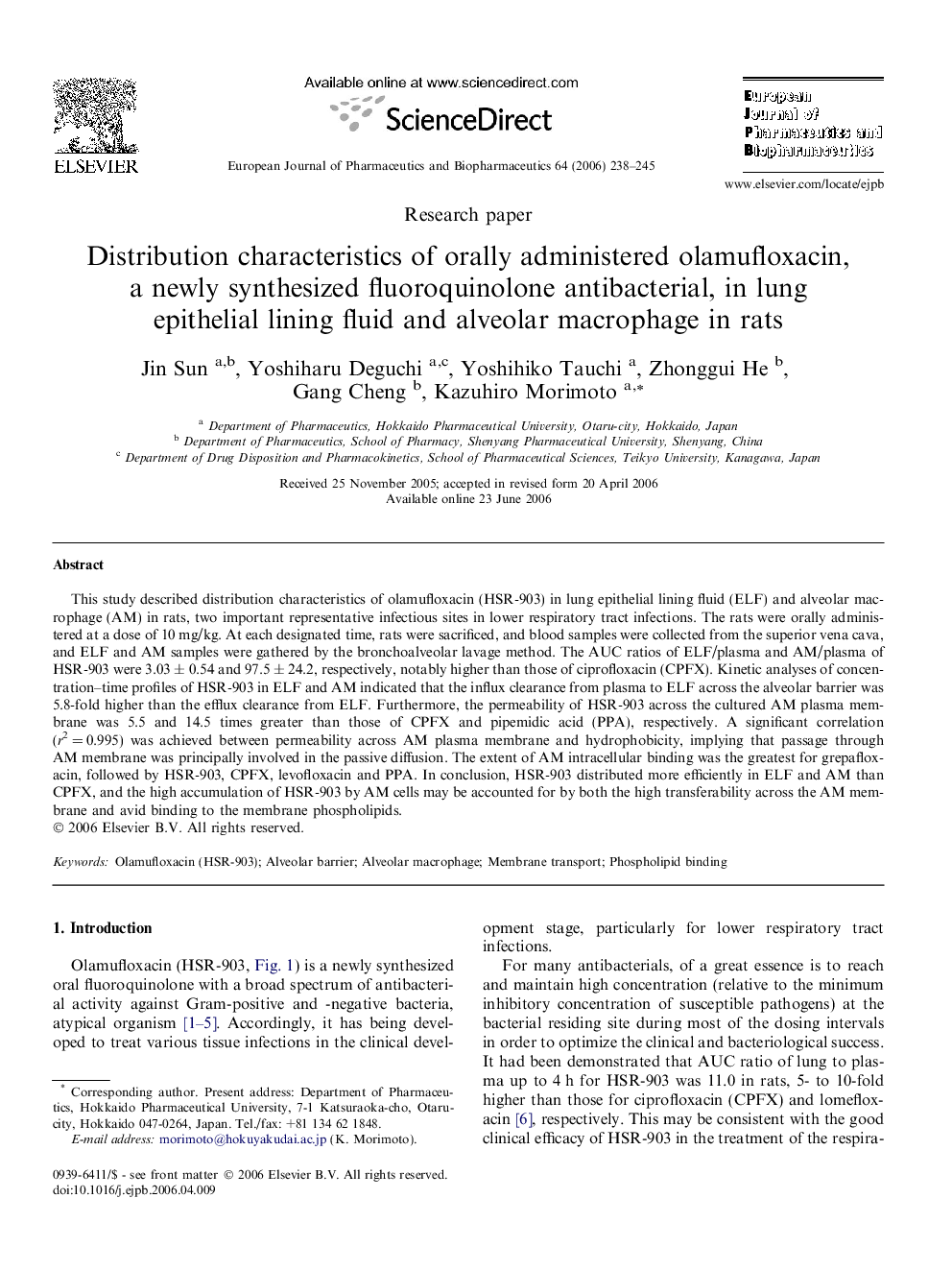| Article ID | Journal | Published Year | Pages | File Type |
|---|---|---|---|---|
| 2085763 | European Journal of Pharmaceutics and Biopharmaceutics | 2006 | 8 Pages |
This study described distribution characteristics of olamufloxacin (HSR-903) in lung epithelial lining fluid (ELF) and alveolar macrophage (AM) in rats, two important representative infectious sites in lower respiratory tract infections. The rats were orally administered at a dose of 10 mg/kg. At each designated time, rats were sacrificed, and blood samples were collected from the superior vena cava, and ELF and AM samples were gathered by the bronchoalveolar lavage method. The AUC ratios of ELF/plasma and AM/plasma of HSR-903 were 3.03 ± 0.54 and 97.5 ± 24.2, respectively, notably higher than those of ciprofloxacin (CPFX). Kinetic analyses of concentration–time profiles of HSR-903 in ELF and AM indicated that the influx clearance from plasma to ELF across the alveolar barrier was 5.8-fold higher than the efflux clearance from ELF. Furthermore, the permeability of HSR-903 across the cultured AM plasma membrane was 5.5 and 14.5 times greater than those of CPFX and pipemidic acid (PPA), respectively. A significant correlation (r2 = 0.995) was achieved between permeability across AM plasma membrane and hydrophobicity, implying that passage through AM membrane was principally involved in the passive diffusion. The extent of AM intracellular binding was the greatest for grepafloxacin, followed by HSR-903, CPFX, levofloxacin and PPA. In conclusion, HSR-903 distributed more efficiently in ELF and AM than CPFX, and the high accumulation of HSR-903 by AM cells may be accounted for by both the high transferability across the AM membrane and avid binding to the membrane phospholipids.
